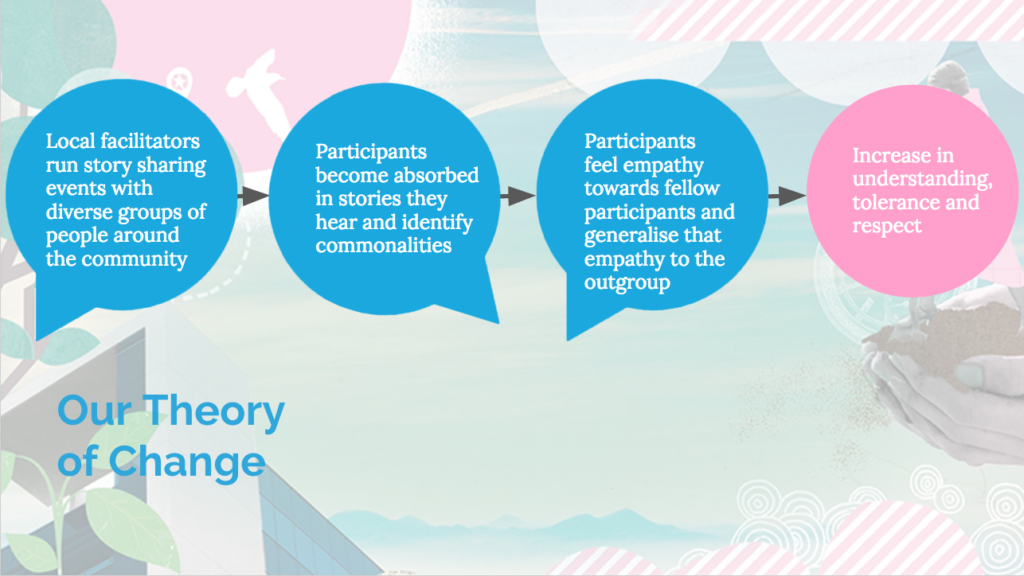This is a guest post by Immy Robinson, Shift’s Lead Researcher who is guiding the research and evaluation work behind Historypin’s Storybox.
Historypin’s Storybox (launching in June 2018) seeks to help address one of the big problems of our time: the increasingly stark disconnections and divisions that are opening up in communities across the world.
To make sure that Storybox has a fighting chance of contributing to the reversal of this trend we’ve done a lot of research into how to build tolerance, respect and understanding across fractured lines. We used this research to devise a theory of change which underpins the Storybox product.

The first thing the research suggests that we need to do to reach our mission is to bring disconnected groups together. This idea – simple as it sounds – was proposed in 1954 by an American psychologist called Gordon Allport who argued that – under certain conditions – contact between members of different groups can reduce conflict and prejudice. His theory has since gained a lot of empirical support and forms the starting point for Storybox.
Rather than trying to reach out to people cold, Storybox leverages existing networks to bring together diverse and disconnected groups. Specifically, we work with libraries and cultural institutions which have near-universal presence to deliver the Storybox product.
Once we’ve got people together in the same room, Storybox harnesses the power of story sharing to ignite positive change. Story sharing is something of a human instinct and is common – and loved – across many cultures. Research shows that story sharing is more effective than information-based treatments (such as factsheets or lectures) in driving attitude change. This is because people are more likely to suspend disbelief when listening to stories and embrace the central message.
Key to this transformation is empathy – the ability to understand and share the feelings of another person. Empathy is a powerful tool for challenging prejudice and can be effectively generated through story sharing. Storybox has been designed around this premise and has some unique characteristics which seek to maximise the likelihood that story sharing generates empathy and challenges negative stereotypes. These include:
- Focusing on commonalities: Storybox gets participants to share stories around universal themes, helping them to see that what they have in common is greater than that which divides them.
- Helping participants to tell good stories: Storybox kits are full of prompts and support to help participants to tell well-formed, engaging stories which increase the likelihood of attitude change by absorbing the listener in the story and helping them to identify with the central character.
- Priming people to feel empathy: Subtle prompts are included in the facilitator’s script which are designed to prime participants to feel empathy towards fellow participants.
Storybox is therefore designed to transform the way participants feel about their fellow storytellers, but the transformation does not stop there. To make a real change, we are identifying ways that participants will generalize the positive feelings they have developed towards their fellow participants to other members of the ‘out group’. While our long term success may be difficult to assess, it’s something that we’re committed to doing through research and evaluation partnerships as Storybox becomes well established in communities around the world.